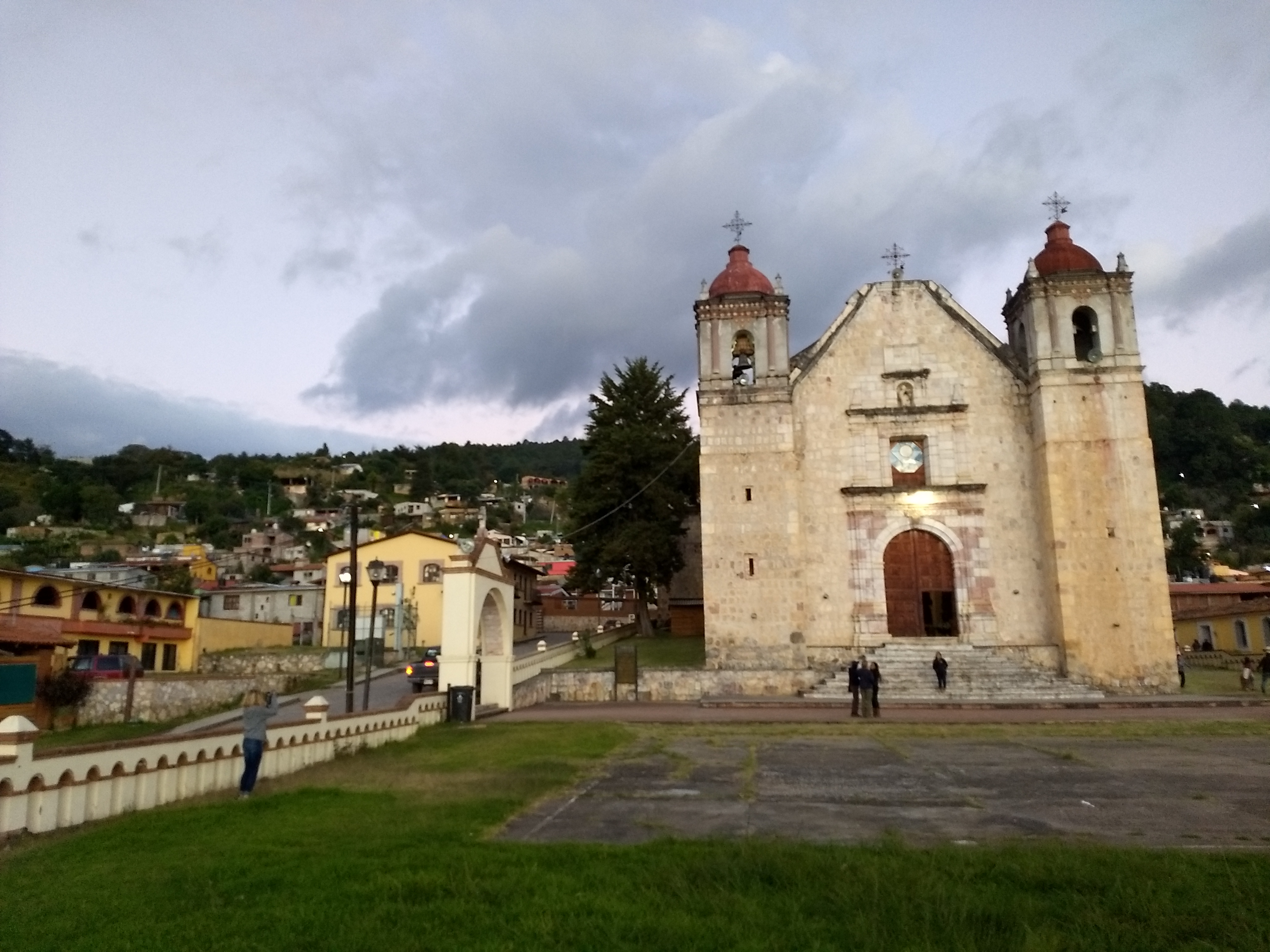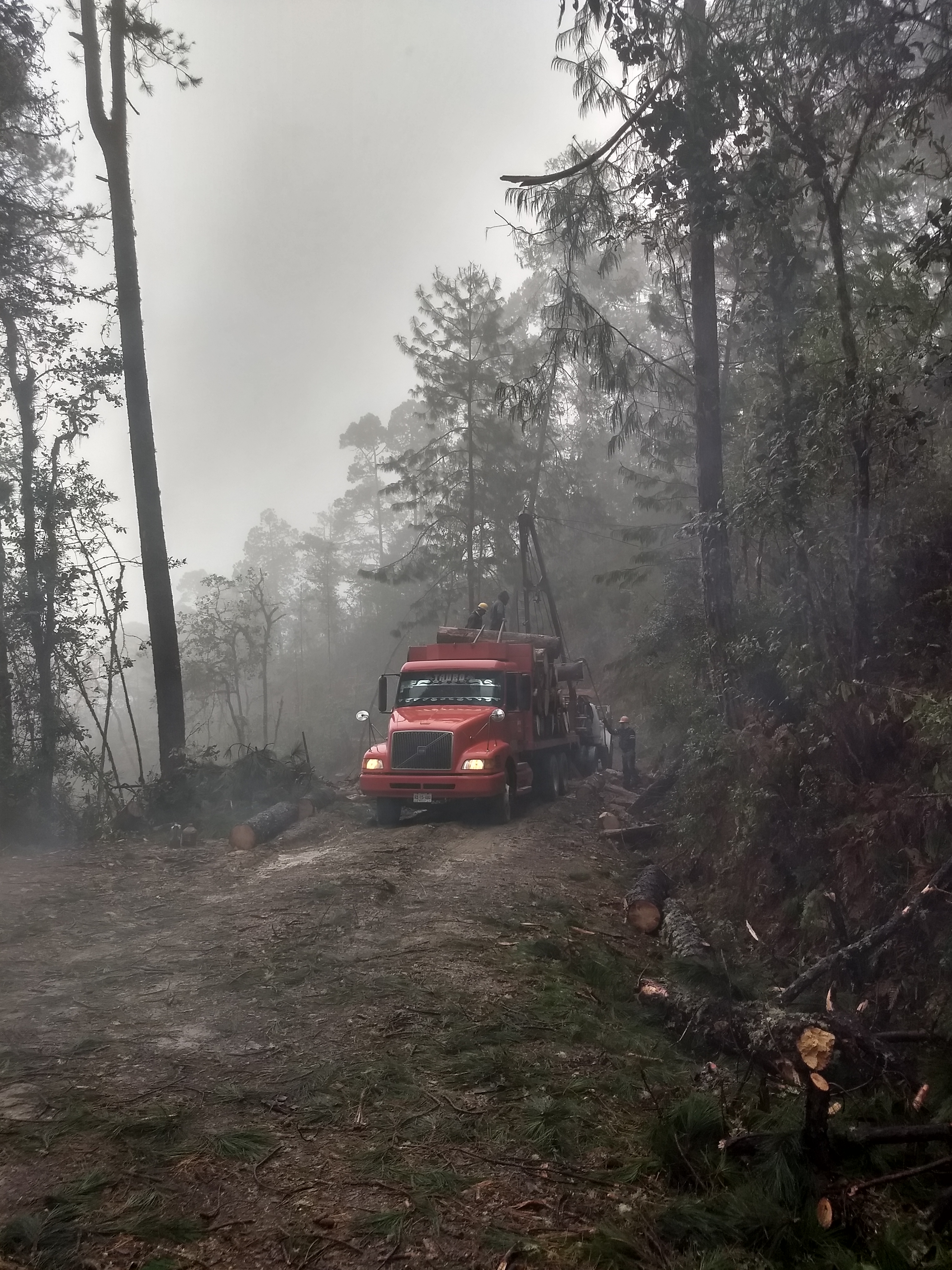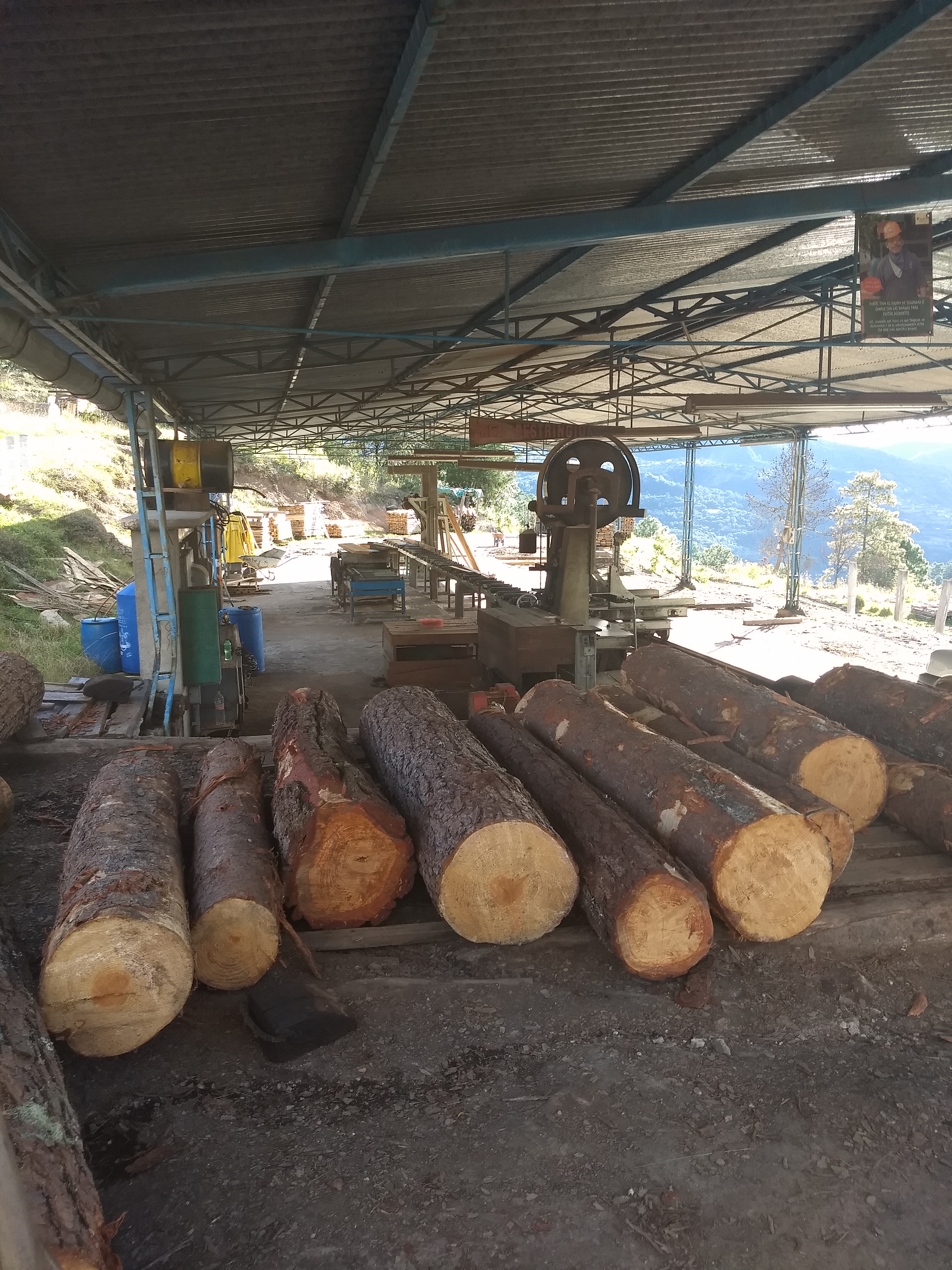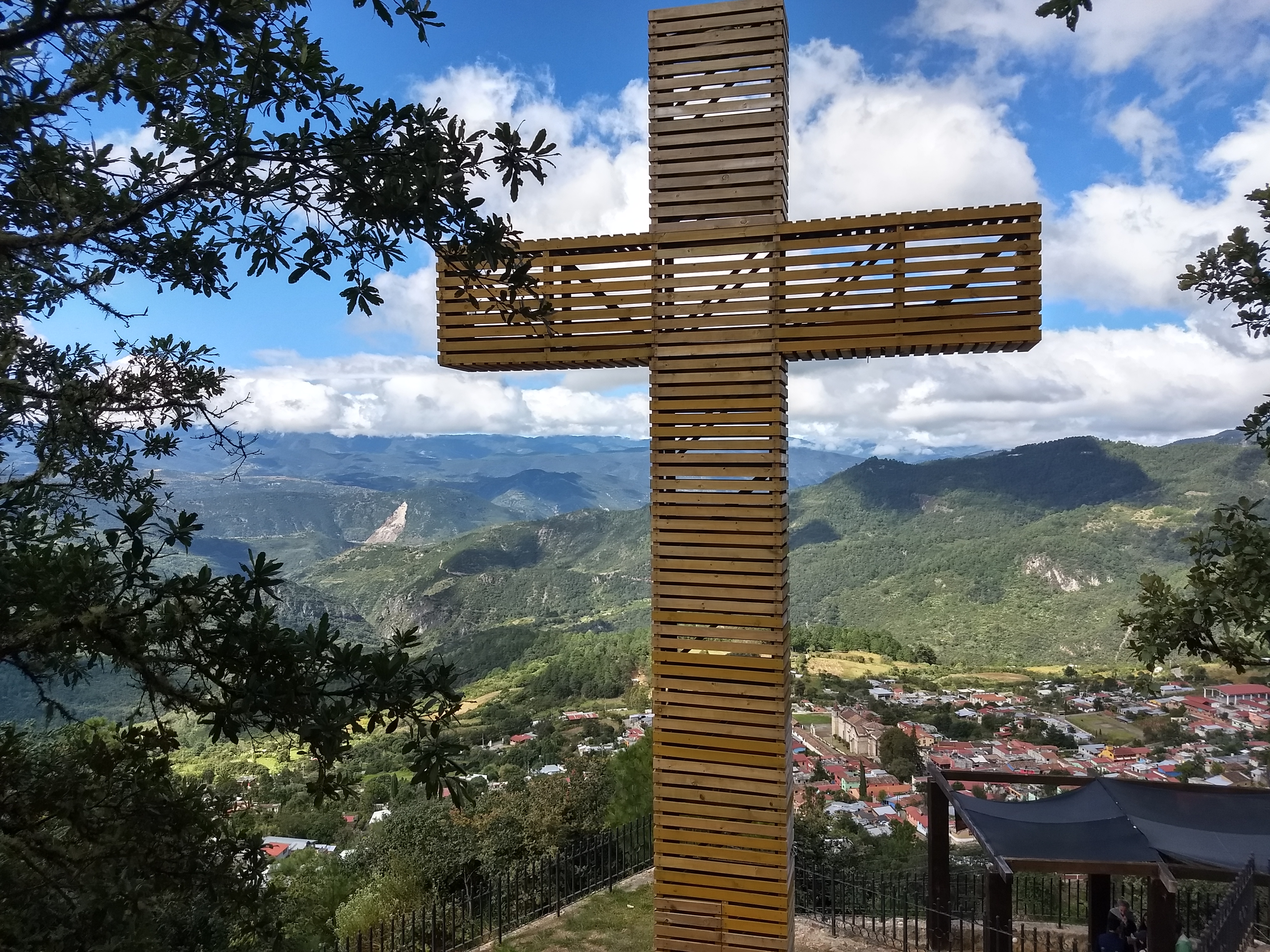As an Environmental Policy minor, it is of great importance to me to understand the viewpoints of local people, conceptions of geography, cultural practices, and general ideas about people’s relationship with the land in the context of certain ecological issues and phenomena. Throughout my activities studying very specific places and issues as an international student, I wonder how I can fully relate these interactions into the context of my own life, nation, and culture. With regards to Mexico, a country with significant economic and political ties to the US, both institutionally and locally, how does this shape the dynamic? In other words, how does something like learning about local forest management techniques in a small indigenous town in northern Oaxaca, Mexico, connect to larger, global environmental issues, and what does that signify for the studies of an American student like me?
A recent visit to Capulálpam de Méndez, a small town in Oaxaca’s Sierra Norte, gave me a lot to think about. The town, which is about two hours north of Oaxaca City, is famous for being the birthplace of a teacher of Benito Juárez, one of Mexico’s most notable politicians, and the first indigenous president (of which there have been three). Because of this, Capulálpam was able to become what is known as a “Pueblo Mágico” (Magic Town). Pueblos Mágicos is the name for a federal program whereby small towns are able to receive federal funding to create tourism programs, especially ecotourism, as a way to provide income to the community (and in some instances, create a stream of tourism that ends up being destructive and detrimental to the community). About two weeks ago, my Biology class had the opportunity to travel there to learn about the town’s unique natural resources management program, called UZACHI. Here is a photo of the town center and the church on the day we arrived:

UZACHI consists of four communities fairly close to each other, three of which are Zapotec and one that is Chinanteco. They all came together to form a collective natural resource management program in response to widespread destruction by a private logging firm in the late 1950’s through 1970’s. The communities have both local delegations in their respective towns and a central assembly with representatives from all communities, which is located in Capulálpam, the largest of the four. Although UZACHI focuses on many different projects within the communities, such as wildlife monitoring, protection of biologically significant ecosystems, targeting of specific species (such as creating artificial perches for bird species), and their largest, and the one I will focus on here, is logging and forest conservation.
It is worth noting that like most other indigenous communities in Oaxaca, these communities have a local governance structure of “usos y costumbres” or customary law, whereby community members, usually male heads of households (although women are starting to enter these roles as well) will periodically have to fulfill “cargos” or unpaid jobs considered obligations to the community, which usually last 1-2 years with different levels of intensity depending on community needs and prestige of the members. Often when local governments in these communities make decisions, UZACHI functions as an outside technical advisor that is well-valued throughout the communities.

UZACHI is the body that manages and implements the community-owned logging enterprise, along with hiring technical advisors to make sure they are logging in a manner that meets their own regulations. This entails coordinating plot rotation schedules, experimenting with different re-growth techniques for trees, and ensuring that areas of biological importance with certain endangered species of trees, vegetation, and animals, don’t have their habitat destroyed by the logging machinery. UZACHI is also certified and works with international partners such as the Forest Stewardship Council to gain international recognition for their conservation efforts. We had the opportunity to travel to Xiaqui, a nearby town also part of UZACHI, to view the different phases of how the industry works, with the first being the cutting down of trees and loading onto a truck (upper left). We were also able to see the tree nursery, where staff collect seeds from trees and develop ideal soil combinations so saplings can grow in a greenhouse before being planted in plots where trees were recently cut down (below).

Finally, we were able to see the facility where the trees are cut to size and prepared for shipment, using a variety of cutting tools and chemical mixtures, and then pieces of wood are rated based on quality and the presence of knots. Although most of the wood the community sells goes to small firms in Oaxaca, they ship some to other parts of Mexico.However it is very expensive given the oversight and small size of the community owned firm. You can see the cutting machinery here:

One of the challenges posed by being successful with this kind of industry on a national scale is the price competition. This is because the majority of harvested wood produced in Mexico is done through illegal logging practices (it is estimated around 70% of the domestic market is illegal), with tacit permission from the state and federal government. There are often connections with drug trafficking, and small communities with little organization are often left powerless against these large economic and political forces.
So how does this relate to being an American student in Mexico? UZACHI has hosted community organizers and hosted summits for people from Brazil and Indonesia to learn about their forest management practices. These are countries that face severe deforestation problems caused by multinational firms harvesting palm oil and by meat producers, industries in which the driving forces are often Americans. UZACHI also receives recognition from organizations in the US, such as the FSC (Forest Stewardship Council), and has been considered by many scholars as a superb representation of forest management programs that have been exceptionally successful in Mexico. I have always found it interesting how so many communities receive support from NGO’s that are often based in countries that are home to many industries those organizations are actively trying to fight. In the globalized twenty-first century, how do we, as American consumers, navigate this paradox?
It is also important to consider this issue from the lens of indigenous autonomy in the context of a capitalist, neoliberal Mexican state. Many scholars have noted that this strategy of community management can be classified as “communitarian capitalism,” whereby the economic benefits of the free market are shared among the community. Does this program genuinely give more autonomy to marginalized groups, or does it merely try and accommodate them inside an inherently unsustainable economic system? In other words, how are we, as consumers in the so-called “first-world” implicated in the issue of forest management considering that if the entire world consumed as much wood and paper products as the average American, there would be no forests left on earth? If all viable forest land was managed in a sustainable way, would it be able to meet current and future global demand, especially in the context of climate change and growing middle classes in many middle-income countries?
I certainly don’t have concrete answers to many of these questions, but they help to clearly connect local issues that may seem unrelated to the context of my life and–hopefully, you will agree–yours as a global consumer. That’s all I have for now, and to conclude here’s a photo of the cross above the town that I took on our last day in Capulálpam:
